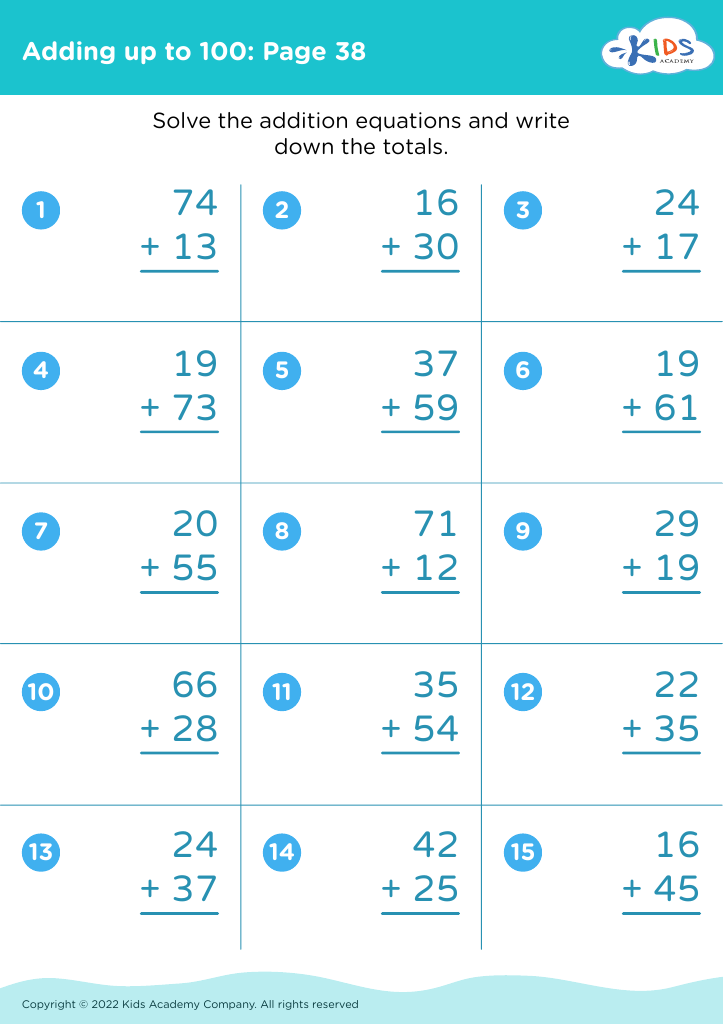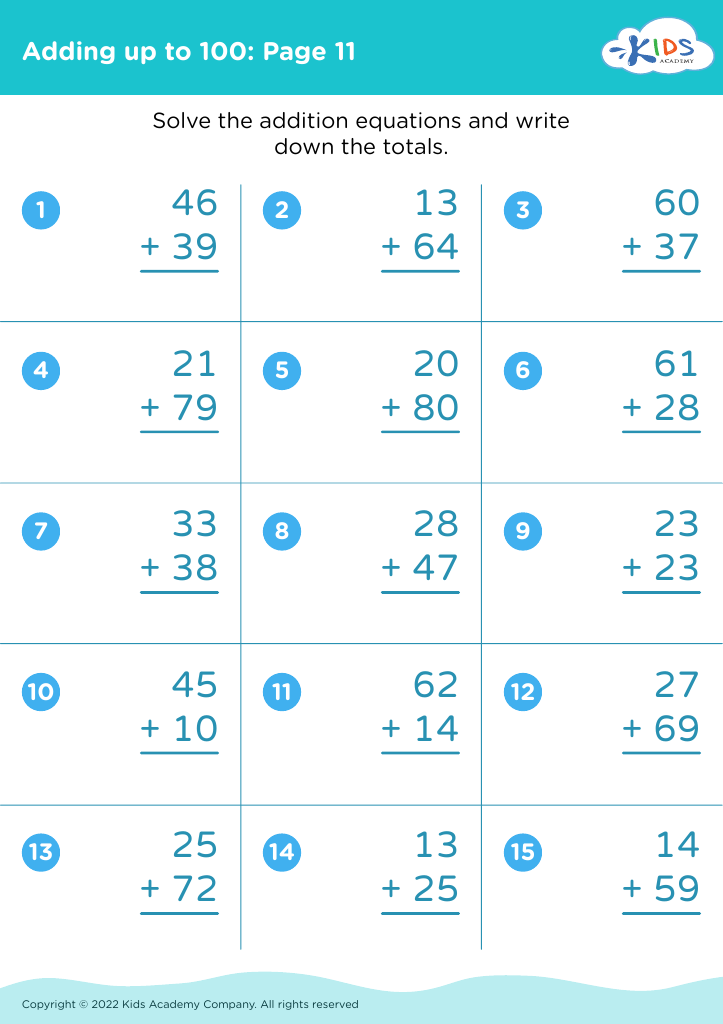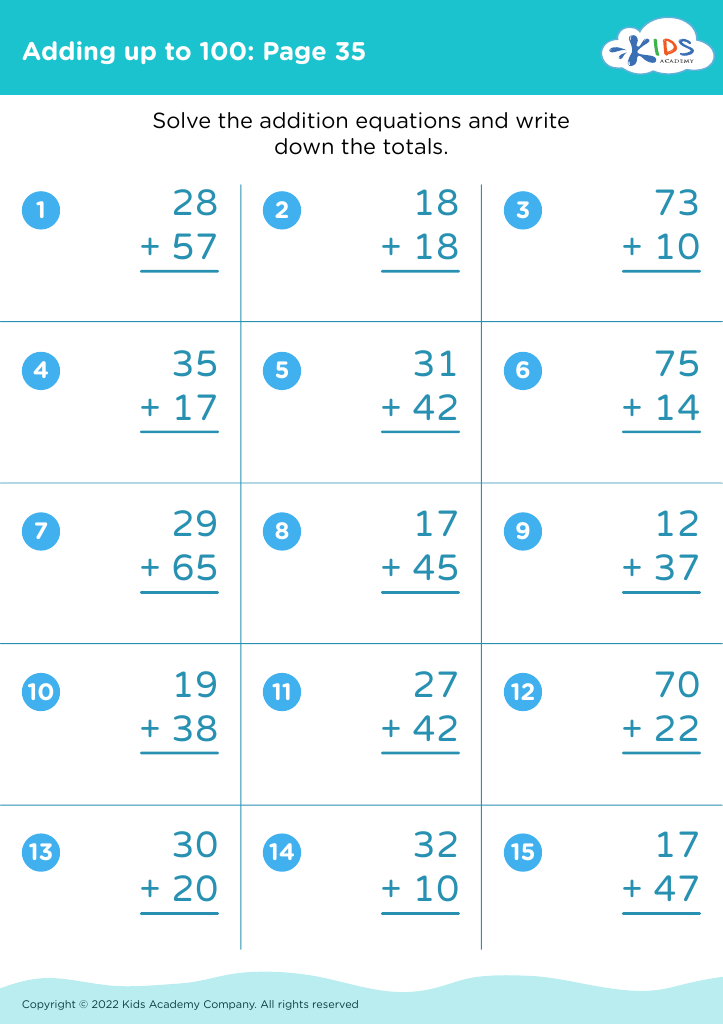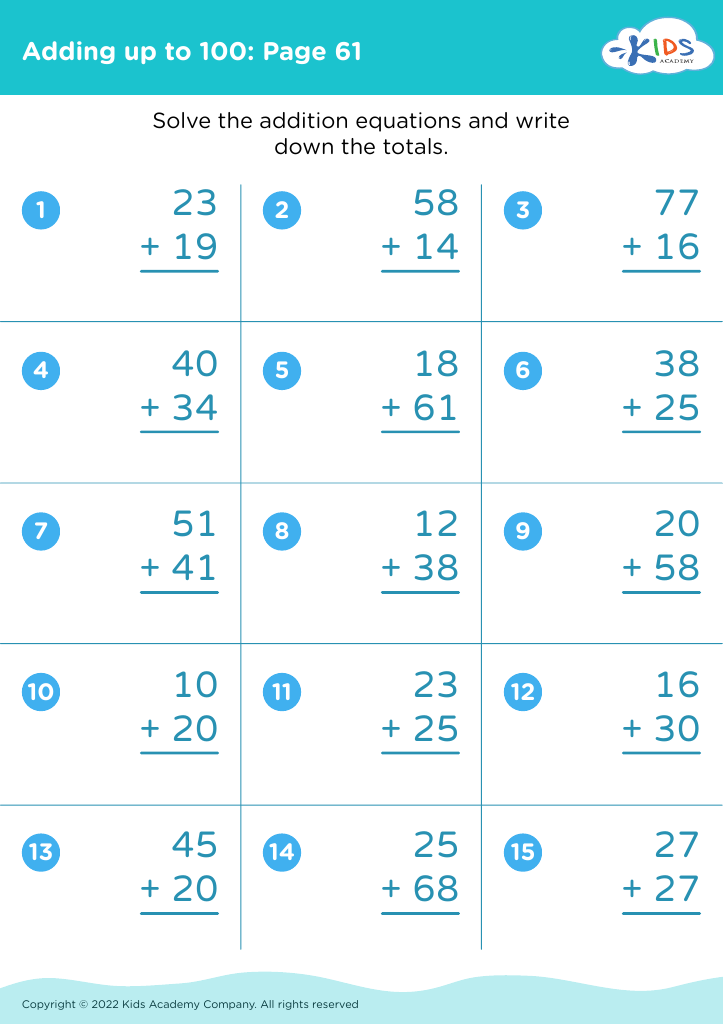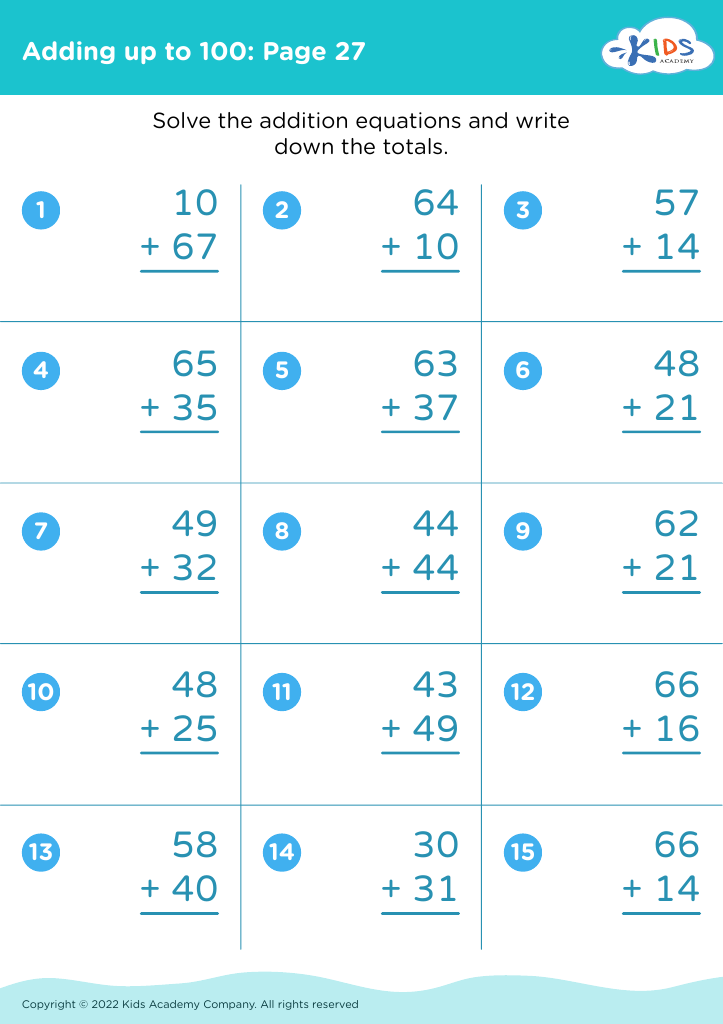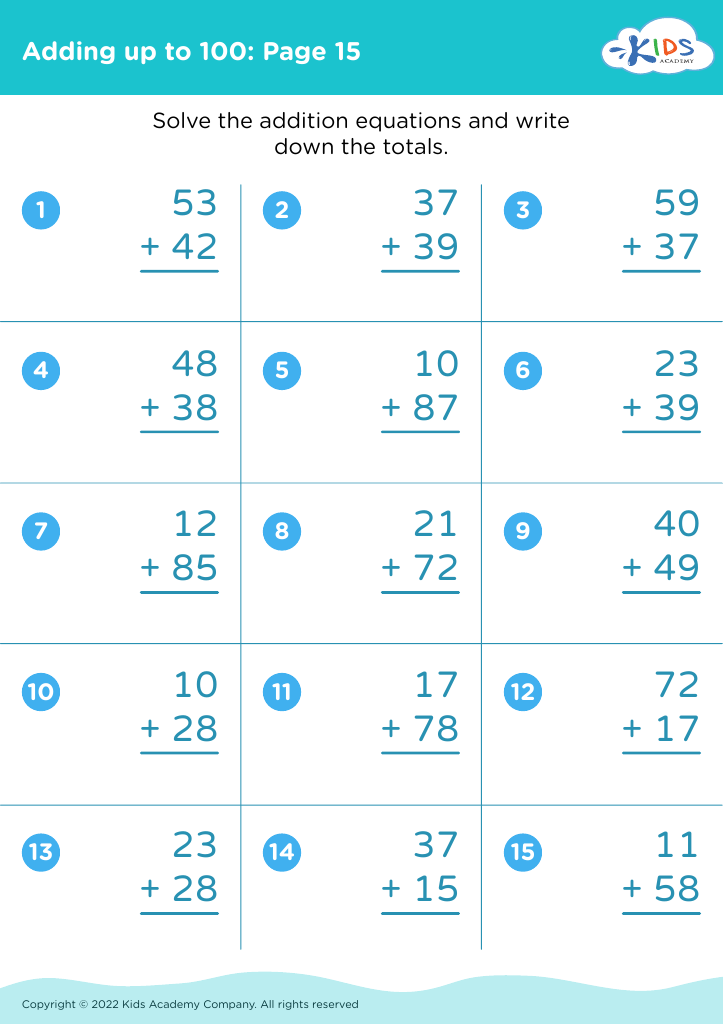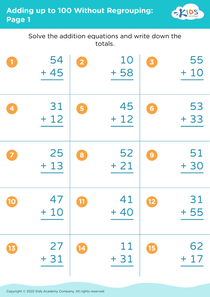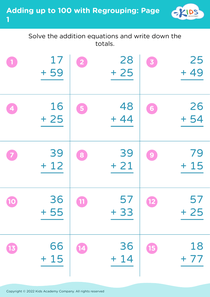Number Recognition Adding up to 100 Misc Worksheets for Ages 5-7
8 filtered results
-
From - To
Explore our engaging "Number Recognition Adding up to 100 Misc Worksheets" designed for ages 5-7! These resources inspire young learners to master number recognition while having fun. Featuring a variety of interactive activities, children will practice identifying and sequencing numbers, enhancing their foundational math skills. Our worksheets encourage critical thinking and promote confidence in early mathematics, making it ideal for both home and classroom use. Whether it’s coloring, tracing, or matching games, these versatile worksheets motivate children to excel in recognizing numbers up to 100. Discover the joy of learning with our thoughtfully crafted materials and watch your child's math skills soar!
Number recognition is a fundamental skill for early learners aged 5-7, serving as the building block for future mathematical understanding. For parents and teachers, fostering this ability helps children develop confidence and proficiency in basic math.
Recognizing numbers lays the groundwork for skills like addition, subtraction, and eventually more complex operations. When children can identify and understand numbers up to 100, it enhances their ability to tackle word problems, estimate quantities, and grasp concepts related to time and money. This not only aids in academic success but also prepares them for real-world situations where numerical literacy is vital.
Engaging children with fun activities that promote number recognition, like games and crafts, ensures that learning feels enjoyable and accessible. Additionally, when parents and teachers collaborate in reinforcing these skills—through homework help, educational apps, or simple discussions about numbers in everyday life—it creates a supportive learning environment.
Ultimately, reinforcing number recognition in this age group is an investment in children’s future capabilities, providing them with a solid foundation that fosters critical thinking, problem-solving, and a positive attitude toward mathematics. Building these skills early sets the stage for lifelong learning and growth in mathematical literacy.
